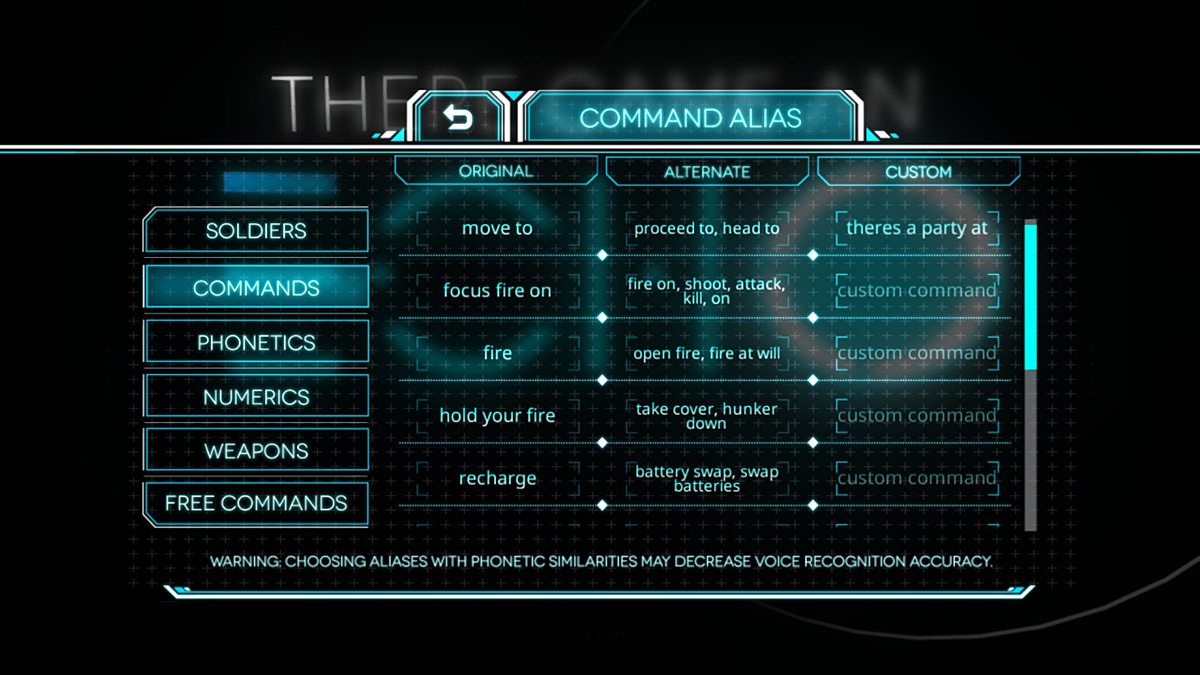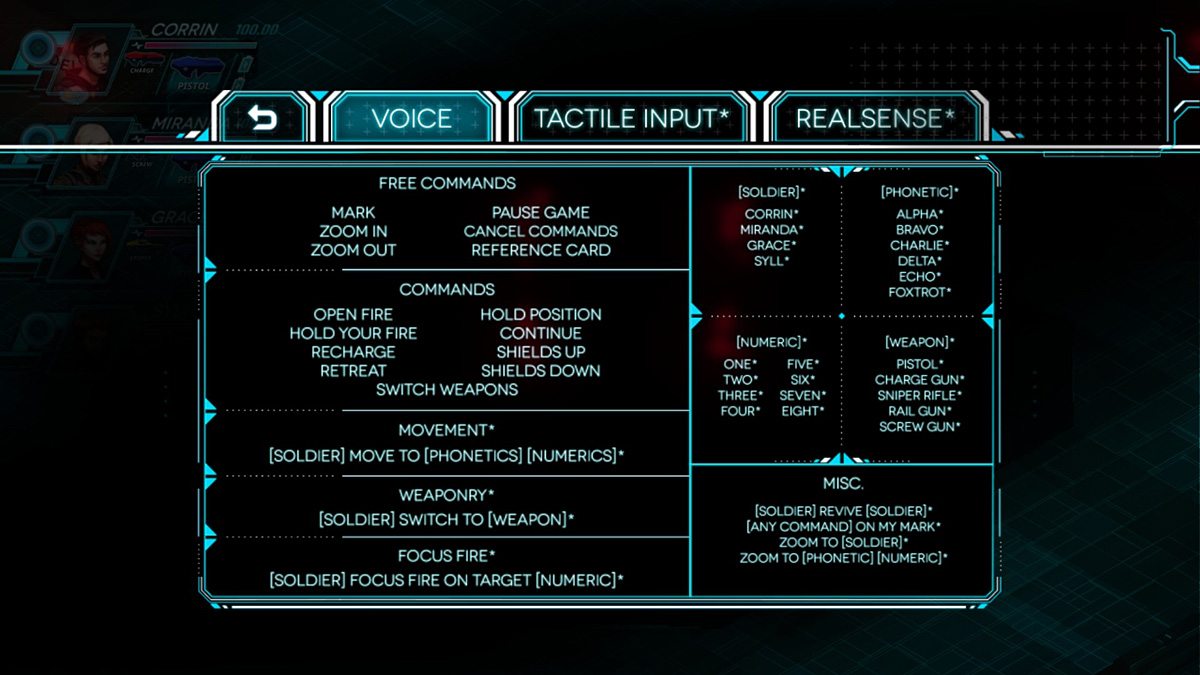There Came an Echo by Iridium Studios launched this week after a successful Kickstarter two years ago. I have been a huge fan of squad-based real-time strategy (RTS) games for a very long time and when I heard of a new game, with a unique, novel way of playing, voiced by none other than Wil Wheaton, I jumped at the chance to get in line.
Iridium Studios had a great but risky idea, a completely voice-controlled RTS game. Even without the great voice cast (Ashley Burch, Laura Bailey, and Yuri Lowenthal also joined the cast during development), the concept and the early art was enough to draw in almost 4,000 backers and to successfully fund the project ($115K raised of the $90K goal).
Iridium also drew attention from Intel and in January of last year they made a deal with Intel for some funding. This is one of the big reasons the game has taken two years but with the added benefit of getting the game not only on Steam (the original goal) but also onto Xbox One and PS4, more funding, more staff, more QA testing, and more resources to put out a more polished project, and, lastly, added support for Intel’s RealSense technology. Personally, I don’t have an Xbox One, a PS4, or RealSense so those didn’t really impress me but more resources and money for a better game was worth the wait for me.

When I first started the game, I went straight to the Voice Calibration as I wanted to make sure everything was up and running smoothly before jumping in to the game. I started out trying to control the game using the built-in microphone and speakers on my laptop and could NOT get the game to recognize my commands. I was immediately worried about how well the game was going to work for me. Iridium does recommend using a headset, which makes sense, so I plugged mine in and tried again. Immediate success! With a near crisis averted, I hit Play and jumped in to the game. It’s important to note that the game works best when you use a normal speaking voice. Don’t try to yell at the game!

So far I’ve played through the first couple hours of the game and the first thing I noticed is that the visuals of this game are really beautiful. There Came an Echo has great environmental lighting and visual effects all within a 2-D isometric grid. Layered on top of that are great sound effects, ambient music, and a great voice cast. I have rage quit games with terrible voice acting and was immediately enamored by the quality of the actors they cast for the game. It doesn’t hurt that the story line is compelling, a bit of a mystery, and that the dialogue is very realistic.
There Came an Echo does a great job of kicking off the story line and training you on all the controls as you, and your character, learn the ropes. It gives you a little at a time so that you aren’t overwhelmed with a ton of various voice commands, weapons, and accessories all at once. The game, despite its complexity and ingenuity, is really pretty simple at its core. You give your team voice commands to move to locations, fire at targets, switch weapons, and recharge their shields all in real-time or using the “mark” command. You can pre-program several commands to be executed on your mark. It’s the simplest and most elegant way I’ve ever planned my moves in a RTS game.

All of the game play takes place in the view seen in the two screen shots above. The first is during a mission and the second is during a cut scene. All cut scenes in the game take place in the game engine so there is real continuity between playing the game and watching the story. Things like cover, flanking, etcetera that are pretty standard in most RTS games are found here as well so I won’t spend much time on those.
The HUD contains a lot of information without feeling too cluttered. In the upper right your team members are listed showing their current energy level, their currently armed weapon, their secondary weapon, and how many recharge packs they have. Energy is interesting in the game as it is a measure of how much shielding a character has left but it is also used to power secondary weapons so using those should be done sparingly. The upper left shows your most recent and last 4 commands that have been issued. This is a great way to check if your command was actually recognized though I quickly stopped checking as I never had an issue with the game recognizing a command. Just below that is your current Objective along with a couple of voice commands that may be useful on the mission.
I had a lot of fun telling my squad what to do and having them do it without lifting a finger. At one point I was even eating some snacks while playing. There is definitely a new joy to be found in hands-free video gaming!

Aside from the basic gameplay, there are some other really cool features in the game. Once you get past the first couple of tutorial missions, you get to start choosing the load out for your team. In addition to having a pistol, everyone can carry one of four secondary weapons with a third slot unlockable later in the game.
- The Charge uses a moderate amount of power but does area damage, think grenade launcher.
- The Screw uses the least amount of power because it does the least amount of damage but is great for laying cover fire.
- The Rail uses the most power but does the most damage.
- The Sniper is pretty self-explanatory but the key is that your squad member can only fire it when not taking fire.
There are also accessories you can load out your team with. These do things like buffing up damage for a particular weapon, increasing accuracy for a particular weapon, making sniping faster, etc. In the short time I’ve played so far, I didn’t really notice them making a big difference but as the game progresses and more powerful accessories and more slots are unlocked, I anticipate them being more important.

Another really great feature of the game is the ability to customize not only the names of your squadmates but any voice command in the game. Because I had no problems with the voice control working and had no issues with the terminology the developers chose, I haven’t really played around with this feature yet. The built-in names and commands all continue to work but you can add your own custom ones to them. I saw that someone changed Corrin, voiced by Wil Wheaton, to Wesley and one of the commands to “Shut Up” just to be able to say “Shut Up, Wesley” to the game.

The reference card is a nice, easy way to get a list of all the voice commands and how to use them in one spot. During game play just saying “Reference Card” will pause the game and bring it up. It’s quite nice to not only be able to pause the game, but bring up the command list without ever having to move anything but your mouth.

With how well the voice controls work in There Came an Echo, I don’t think I’ll ever bother with the tactile (mouse and keyboard) controls. I did want to see how they worked though, so I spent a couple of minutes in the war room with them. The controls are very familiar to most gamers – right-click, context based pop-up wheel menus for controlling the actions of your characters and dragging and clicking to tell them where to go. I did find that the tactile controls are sluggish because the game actually converts your tactile control into a voice command that is issued before your squad actually performs the action. It seems like the sluggishness might get on your nerves if you had to use it a lot, but again, I don’t see myself ever playing this way so it’s not a big negative for me.

The last feature of the game I wanted to briefly mention is the war room. Accessed from the main menu, the war room is a way to practice your commands and strategy against waves of enemy soldiers. I found the war room especially helpful with learning how to stack commands with the “mark” controls. It’s also a great way to test out your custom voice commands before using them in the actual game.
I’ve recently been made aware of the Bechdel test and its something that I strongly believe is very important in all types of media. I’ve tried to start looking at all the things I consume through that lens and I am very happy to report that 3 out of the 6 main characters are named females and they have plenty of conversations with each other that aren’t about a man. Even your own character is the neutrally named “Sam.” Kudos to the Iridium team for creating a revolutionary RTS game that also passes the Bechdel test – something sorely needed in the gaming community.
I can’t recommend this game enough for anyone who likes RTS games, beautiful visuals, great voice acting, independent game studios, and a novel way to play games.



